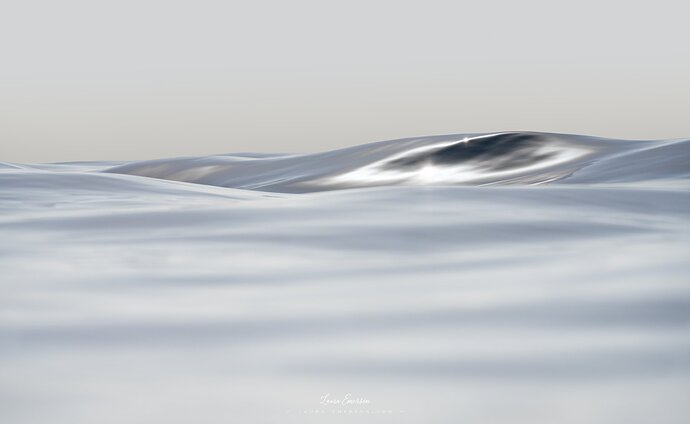V1- a lighter above the wave, more drawn out gradient about 2/3rd of the way to the top. Indeed, almost a uniform colour rather than a gradient.
V2 - a slighter more colourful gradient just above the horizon and about midway to the top
Solar curves visualization of the “dirty” sky
Critique Style Requested: In-depth
The photographer has shared comprehensive information about their intent and creative vision for this image. Please examine the details and offer feedback on how they can most effectively realize their vision.
Self Critique
Straight off capture of a rolling wave in the water.
I cropped about 25% of the bottom - but there probably is still some way to go.
Creative direction
My aim in processing is to try to enhance the natural metallic quality that was captured. I wish I could achieve a more subtle result, particularly as concerns contrast but that’s the best I can do for now.
Specific Feedback
I am grateful for aesthetic and emotional feedback, but my request for this image is more technical.
Due to the camera being in an underwater housing with an acrylic port, there often are water droplets/smears and salt residues that require cleaning up in post. This is worst in the sky, as you can see in the attached solar curves visualization of the image.
My question about this image is: does the sky look convincing?
I have made many versions of the sky, but here are my final two.
The first one is very light with a very slight, very wide barely there gradient.
The second one is a more pronounced gradient with a slighty darker, more saturated colour from the top of the wave transitioning into a light gray colour roughly matching the bottom part of the wave which reflects the higher sky. Due to the difference in color between the bottom of the new sky and the top of the wave, I have had to reshape and match colors along the top of the wave using frequency separation.
I am not sure whether the difference between the 2 skies will be visible in these uploads, but if they are I would be very keen to hear which one you prefer, and why?
Technical Details
If you would like to know about the shooting data, please DM me.
Description
I was in the water for 3.5 hours on that day and only got 1 exploitable frame during less than 10s of shooting. Hard work, but fun!



